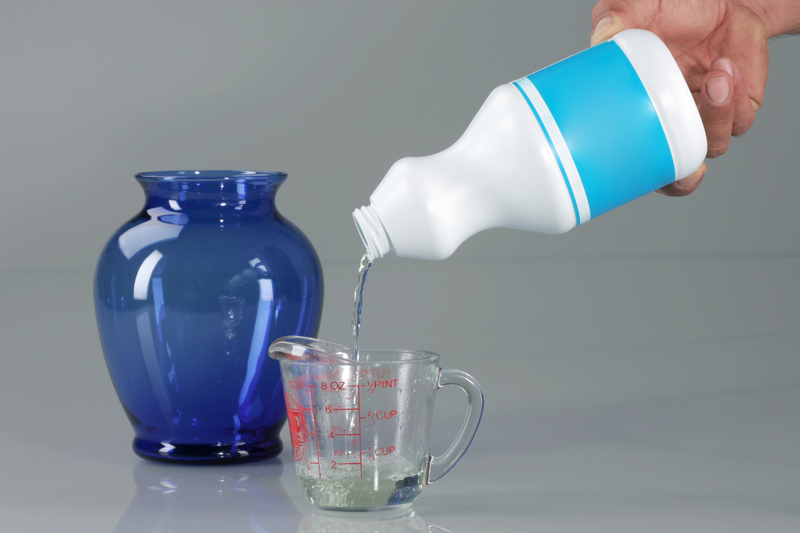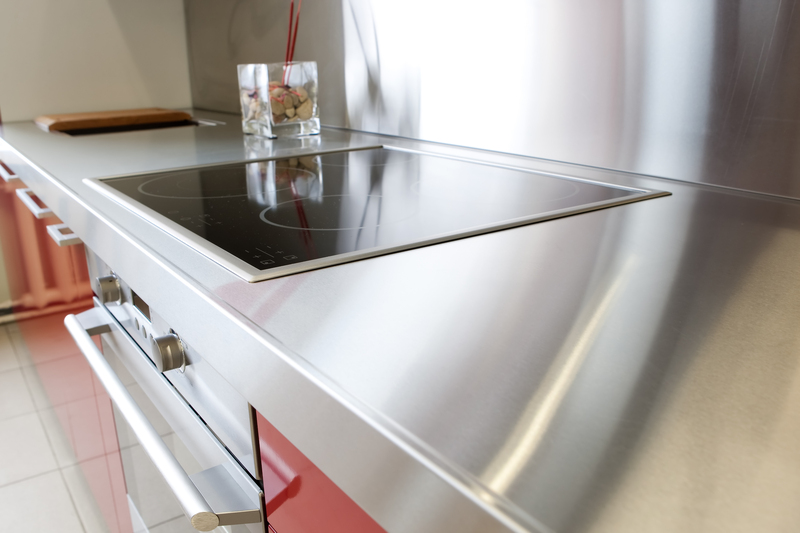Discover the Best Methods to Erase Burnt-Ons from Your Stovetop
Posted on 08/09/2025
Discover the Best Methods to Erase Burnt-Ons from Your Stovetop
Cooking mishaps are inevitable, leaving us with stubborn burnt-on stains that turn our beautiful stovetops into an eyesore. If you're tired of scrubbing endlessly with little result or worrying about damaging your appliance, you're not alone. This comprehensive guide will help you find the best ways to remove burnt-on residue from your stovetop, restore its shine, and keep it looking like new with minimum effort. Discover expert-approved methods, plus tips for prevention and maintenance.
Why Burnt-Ons Are Difficult to Remove
Burnt-ons are typically the result of food, sauces, or oil spilling over and getting cooked onto the stovetop at high temperatures. Over time, these residues harden and form a stubborn crust that can seem impossible to eliminate. Depending on your stovetop material--glass, ceramic, or metal--the removal process may vary.
Several factors make burnt-ons especially tough to remove:
- High heat causes carbonization of organic matter, creating tough black spots.
- Grease binds with food particles, adhering firmly to surfaces.
- Repeated heating bakes on residue even further.
- Chemical reactions between the spill and the surface might discolor or etch stovetops.

General Safety Precautions Before You Begin
- Unplug electric stovetops or ensure gas burners are off and cool before cleaning.
- Wear gloves to protect your skin from harsh cleaners.
- Always follow your stovetop manufacturer's cleaning instructions for best results.
- Test new products or methods on a small, inconspicuous area first.
Understanding Your Stovetop Surface
- Glass stovetops: Smooth and modern but prone to scratching--require gentle, non-abrasive methods.
- Ceramic stovetops: Similar to glass but sometimes a bit more resilient to heat or minor abrasives.
- Enamel-coated metal: Durable; can handle slightly tougher scrubbing but avoid chipping the enamel.
- Traditional metal (stainless steel or cast iron): Rugged but can scratch or discolor with harsh chemicals.
Select the right cleaning technique for your stovetop type to achieve the best, damage-free results.
Best Methods to Remove Burnt-On Stains from Your Stovetop
There is no one-size-fits-all solution, but these tried-and-tested methods help erase even the toughest burnt-on challenges. Combine several techniques for especially stubborn stains.
1. The Soaking Method (for Light Burnt-Ons)
This is the gentlest way to start erasing burnt-on residue from any stovetop:
- Spray the affected area with a mixture of warm water and a few drops of dish soap.
- Lay a damp towel over the area and let it soak for 30 minutes to an hour.
- Gently wipe away residue with a soft sponge or microfiber cloth.
- Rinse and repeat as needed.
This easy method is ideal for fresh stains or regular stovetop care.
2. Baking Soda Paste for Stubborn Burnt-Ons
- Mix baking soda with a little water to form a spreadable paste.
- Spread the paste over the burnt-on area and let it sit for 15-20 minutes.
- Use a non-scratch scouring pad or soft-bristled brush to gently scrub in a circular motion.
- Wipe away with a damp cloth and repeat if necessary.
Baking soda's gentle abrasiveness can erase burnt residue without damaging most surfaces. It's especially effective for ceramic and glass stovetops.
3. White Vinegar and Steam Cleaning
- Pour white vinegar over the burnt-on stain and cover it with a soaked towel.
- Allow to sit for 20-30 minutes. The acidic nature of vinegar helps dissolve tough debris.
- For tougher marks, boil some water and carefully pour lightly over the towel to generate steam, further helping to loosen residue.
- Wipe the area clean with a sponge.
Vinegar has the added benefit of degreasing, which makes it excellent for removing greasy, burnt-ons from metal burners and enamel surfaces.
4. Commercial Stove Top Cleaners
- Choose a cleaner designed for your stovetop (glass & ceramic formulas differ from metal-specific options).
- Apply according to package instructions, typically letting the product sit for several minutes before scrubbing.
- Rinse thoroughly to remove any cleaner residue.
Look for products labeled as "burnt-on remover" or "heavy-duty stovetop cleaner." These can be highly effective but may contain chemicals, so test carefully.
5. Razor Blade or Scraper (for Glass and Ceramic Only)
- Use a specialized stovetop razor scraper with a new, clean blade.
- Hold the blade at a 45-degree angle and carefully slide it under burnt-on spots.
- Avoid gouging or scratching; never use this method on enamel or metal surfaces.
Tip: Always use with a lubricant (water, vinegar, or stove cleaner) and never dry scrape.
6. Lemons and Salt for Natural Cleaning
- Cut a lemon in half and dip the cut side in coarse salt.
- Rub the salted lemon over burnt-on stains, letting the citric acid and abrasion work together.
- Leave for five minutes, then wipe with a damp cloth.
This all-natural method is safe for most stovetops and leaves a fresh scent.
Other Tips for Erasing Burnt-On Residues from Stovetops
- Do not use steel wool on glass or ceramic surfaces, as it can cause scratching.
- For baked-on grease, alternate between baking soda and vinegar applications for a fizzing, loosening effect.
- Plastic spatulas may be used as gentle scrapers when a razor is unsuitable.
- Never plunge a hot glass cooktop into cold water; this can cause thermal shock and cracks.
- For discolored metal burner grates, try soaking overnight in hot water with a cup of baking soda, then scrubbing with a paste of baking soda and water.
Specific Solutions for Different Stovetop Types
How to Remove Burnt-Ons from Glass Stovetops
- Always wait until the surface is completely cool.
- Start with baking soda and vinegar paste and finish with a razor scraper for persistent spots.
- Avoid harsh chemicals or abrasive pads that scratch the finish.
- Polish with a dry microfiber cloth for a streak-free shine.
How to Clean Burnt Residue from Metal and Enamel Stovetops
- Use a mixture of baking soda paste and a little white vinegar for effective degreasing.
- Enamel is slightly more robust--gentle scrubbing with a nylon brush is safe.
- Rinse thoroughly to prevent residue build-up.
How to Approach Cast Iron Burners and Grates
- Remove and soak grates in a bath of hot water and dish soap for several hours or overnight.
- Scrub with a stiff brush, then dry thoroughly to prevent rust.
- Never put cast iron in the dishwasher.
How to Prevent Burnt-Ons from Forming
- Wipe spills immediately: As soon as it's safe, swipe up food or liquid before it bakes on.
- Deep clean regularly: Don't wait for burnt-ons to accumulate. Wipe down the stove after every cooking session.
- Use splatter guards or pot lids to minimize overflows.
- Apply a protectant: Glass cooktop protective creams make cleaning future burnt-ons much easier.
- Cook at lower heats when possible to reduce the risk of boil-overs.
Common Mistakes to Avoid When Cleaning Burnt-On Residue from Your Stovetop
- Using sharp metal tools not designed for stovetops, which can damage the finish.
- Scrubbing too hard and creating micro-scratches that attract more residue.
- Applying bleach or ammonia to glass or ceramic surfaces, which may cause dull spots or discoloration.
- Ignoring burnt-ons for too long, which allows them to bake on more with each use.

Frequently Asked Questions: Burnt-On Removal from Stovetops
Can I use oven cleaner on my stovetop?
Most oven cleaners are too harsh for glass or ceramic stovetops. Use only on enamel or metal grates, and always check the manufacturer's guidelines.
What's the fastest way to erase burnt-on stains?
For light to moderate stains, combining baking soda paste and vinegar soak, followed by gentle scraping with a stovetop-safe razor, yields quick results. However, patience is key!
How often should I deep-clean my stovetop?
Clean spills immediately and aim for a more thorough cleaning every week or two, depending on frequency of use.
Will these methods work on induction cooktops?
Yes! Baking soda paste, vinegar, and gentle scraping are all safe for induction stovetops, which typically feature a glass-ceramic surface.
Conclusion: Enjoy a Spotless, Beautiful Stovetop Every Day
Erasing burnt-ons from your stovetop doesn't have to be a dreaded chore. With the effective, safe techniques detailed above, you can restore your stovetop's shine without risk of damage or resorting to harsh chemicals. Whether you use baking soda, vinegar, lemon, commercial cleaners, or the trusty razor scraper, consistency and gentle care are key.
For best results in removing burnt-on residue from your stovetop, apply preventative habits and clean up spills promptly. A spotless stove not only improves your kitchen's appearance but also extends the lifespan of your appliance.
Discover more home cleaning tips and keep your kitchen gleaming by following our in-depth guides on every aspect of household care.
```

